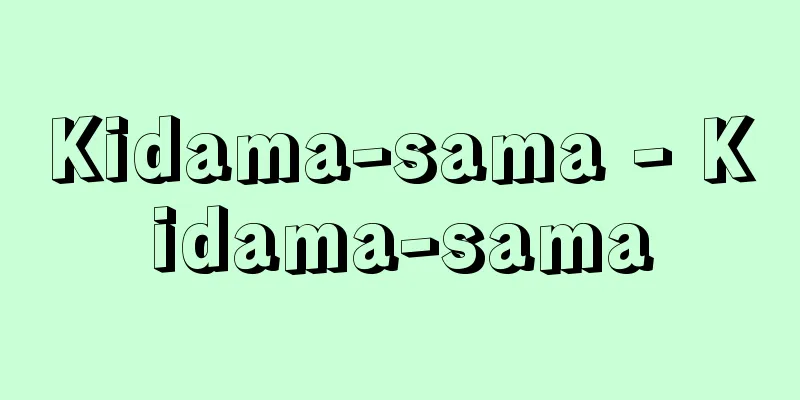Dimension - Jigen (English spelling) dimension

|
Also called dimension. The number of coordinates required to specify each point in a space is called the dimension of that space. In Euclid's "Stoikeia," "A point is something without parts. A line is length without width. A surface is something that has only length and width. A solid is something that has length, width, and height," which is probably the most simple observation about dimension. Length, width, and height (or depth) are dimensions, and in the Greek era, space was thought to be a collection of places that had these three dimensions. This idea was stated more clearly by Galileo: "Through a point in space there are three straight lines which intersect one another at right angles, and it is not possible for more than three straight lines to intersect at right angles; therefore the dimension of space is three." In 1637, when Galileo's theory in Dialogue Concerning the Two Worlds was rejected by the Pope, Descartes published Discourse on the Method and Three Treatises, one of which is Geometry. This marked the birth of today's analytical geometry, but it also gave the idea that coordinate axes that determine dimensions are set in space. That is, as shown in , the position of a point on a line is determined by a single coordinate axis that corresponds to a real number when a base point is fixed (corresponding to the number 0). If two coordinate axes, vertical and horizontal, are taken for a point on a plane, it corresponds to a set of two real numbers (x 1 , x 2 ). And a point in space is represented by a set of three real numbers (x 1 , x 2 , x 3 ) by three coordinate axes. Therefore, a line is considered to be a one-dimensional figure, a plane is a two-dimensional figure, and space is a three-dimensional figure. Then, although it does not appeal to our intuition, four-dimensional space can be thought of as a set of four real numbers ( x1 , x2 , x3 , x4 ) ( x1 , x2 , x3 are the dimensions of ordinary space, and x4 is the time axis, and four-dimensional space is sometimes called space-time in physics), five-dimensional space as a set of five real numbers, and generally n-dimensional space as a set of n real numbers (one point is considered to be 0-dimensional space). Extending these ideas further, various infinite-dimensional spaces are nowadays considered. Since figures such as line segments and circumferences are similar to straight lines, it is more natural to consider their dimensions to be one-dimensional. Therefore, any figure made by joining several line segments (1 simplex) at their end points using the counting method shown in is said to be a one-dimensional figure. In this case, the line segments can be curved in any way. Similarly, a figure made by combining a triangle (2 simplex) and a line segment is a two-dimensional figure. Here, the triangle can be curved in any way, so for example, a sphere is a two-dimensional figure ( ). In general, a polyhedron consisting of simplexes with n or less dimensions is an n-dimensional figure. The dimension of a figure can be determined using its local homology group or Lebesgue's paving stone theorem. Since we live in a three-dimensional space, three-dimensional figures other than three-dimensional space and four-dimensional figures cannot be drawn in three-dimensional space, so we cannot show them in real life, but if we try to draw a four-dimensional cube on a plane, just like drawing a three-dimensional cube, it will look like [Hiroshi Noguchi] "What is Dimension?" by Tao Uzurazo (Kodansha Bluebacks) [Reference] |©Shogakukan "> Dimensions of lines, planes, and space (Figure A) ©Shogakukan "> Figures made by joining line segments (Figure B) ©Shogakukan "> One-dimensional and two-dimensional figures (Figure C) ©Shogakukan "> Four-dimensional cube (Figure D) Source: Shogakukan Encyclopedia Nipponica About Encyclopedia Nipponica Information | Legend |
|
ディメンション、ジメンションともいう。空間内において、各点を指定するのに必要な座標の数をその空間の次元という。ユークリッドの『原本』(『ストイケイア』)では、「点とは部分をもたないものである。線とは幅のない長さである。面とは長さと幅のみをもつものである。立体とは長さと幅と高さをもつものである」と定義しているが、これが次元に関するもっとも素朴な観察であろう。長さ、幅、高さ(あるいは深さ)が次元であり、空間はこの三つの次元をもっている場所の集まりとギリシア時代には考えられていた。 この考えはガリレオによって、さらに明確に次のように述べられている。「空間の1点を通り、互いに直角に交わる直線は三つあり、4本以上の直線を直角に交わらせることはできない。よって空間の次元は3である」。 このガリレオの説を述べた『天文対話』がローマ法王の忌避に触れていた1637年に、デカルトは『方法序説および三つの試論』を発表したが、この三つの試論の一つが「幾何学」である。これは今日の解析幾何学の誕生を示すものであるが、同時に次元を確定する座標軸が空間に設定されるというアイデアを与えている。すなわち、のように、直線上の点の位置は、基点を一つ固定する(数0を対応させる)と、実数と対応し一つの座標軸で定まる。平面上の点は縦・横の二つの座標軸をとれば、二つの実数の組み(x1, x2)と対応する。そして空間の点は三つの座標軸によって、三つの実数の組み(x1, x2, x3)で表される。よって直線は一次元、平面は二次元、空間は三次元の図形であると考えられる。すると、われわれの直観には訴えることはできないが、四つの実数の組み(x1, x2, x3, x4)の集合として四次元空間(x1、x2、x3は普通の空間の次元で、x4は時間軸であるとみて、四次元空間は物理学などでは時空間とよばれることもある)、五つの実数の組みの集合としての五次元空間、一般にn個の実数の組みの集合としてn次元空間が考えられる(1点は0次元空間とみなす)。こうした考えをさらに拡張して、今日では無限次元の空間もいろいろと考えられている。 線分や円周などの図形は直線と類似の図形であるので、これらの次元も一次元であるとみなすほうが自然である。そこで、のような数え方で線分(1単体)を何個かその端点で接合してできる図形はすべて一次元図形であるという。この場合、線分はどのように曲がったものでもよいとする。同様に三角形(2単体)と線分とを組み合わせてできる図形は二次元図形である。ここで三角形はどのように曲がっていてもよいので、たとえば球面などは二次元図形である()。一般にn次元以下の単体からなる多面体はn次元の図形である。図形の次元はその局所的なホモロジー群またはルベーグの敷石定理などを用いても定めることができる。われわれは三次元空間の中に生きているので、三次元空間以外の三次元図形や四次元図形などは三次元空間の中では描けないので、現物を示すことはできないが、平面の中に三次元図形の立方体を描くように、四次元の立方体を描いてみるとのようになる。 [野口 廣] 『田尾鶉三著『次元とはなにか』(講談社・ブルーバックス)』 [参照項目] |©Shogakukan"> 直線、平面、空間の次元〔図A〕 ©Shogakukan"> 線分と線分を接合してできる図形〔図B〕 ©Shogakukan"> 一次元図形と二次元図形〔図C〕 ©Shogakukan"> 四次元の立方体〔図D〕 出典 小学館 日本大百科全書(ニッポニカ)日本大百科全書(ニッポニカ)について 情報 | 凡例 |
Recommend
Hildesheim (English spelling)
A city in Lower Saxony, northwest Germany, about 3...
Erabu sea snake subfamily - Erabu sea snake red
…They are often confused with the fish-like sea s...
śabdabrahmavāda (English spelling) sabdabrahmavada
In later times it split into many sects, but it h...
Supercooled austenite state - Supercooled austenite state
…A type of thermomechanical processing method for...
Mukhtar's Rebellion - Mukhtar's Rebellion (English spelling) al-Mukhtār
A Shiite rebellion that occurred in Kufa during th...
Pony Express
A kind of postal service using horse riders to car...
"Yohei Kawachiya"
...This murder was soon adapted into a Kabuki pla...
Blackbird (black songbird)
A passerine bird of the family Flycatcher. It is a...
Inspection - Shigaku
〘noun〙① To inspect academic affairs. [Modern Encyc...
Departmental Ministers
… In the United Kingdom, known as the birthplace ...
Sankichi Sakata
1870-1946 A shogi player from the Meiji to early ...
Dacron
The name of polyethylene terephthalate fiber (poly...
Iodomercurate salt
A general term for salts that are considered to ha...
Kusaya
A type of salted dried fish made from horse macke...
Minase Family - Minaseke
They are descendants of Michitaka, the son of Kane...









